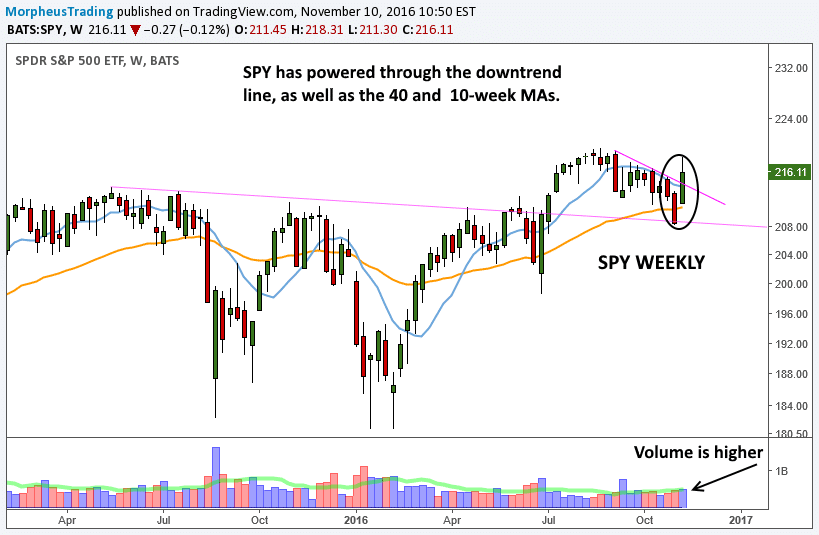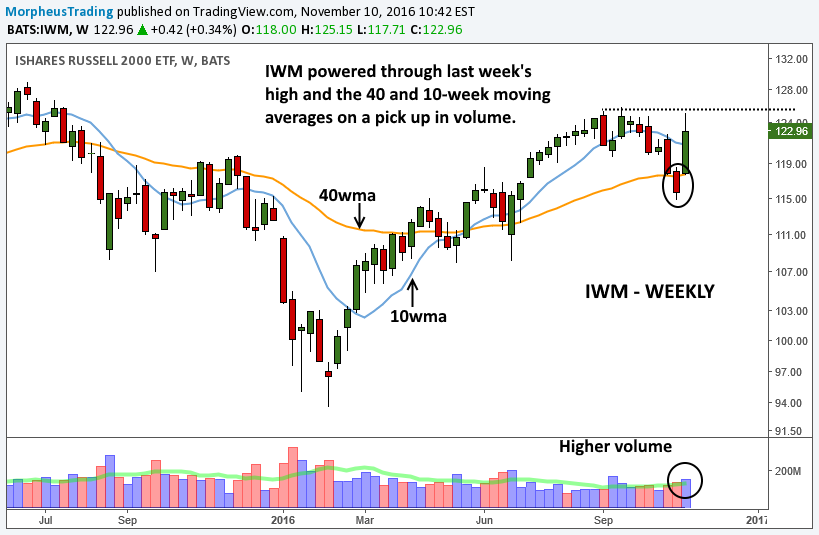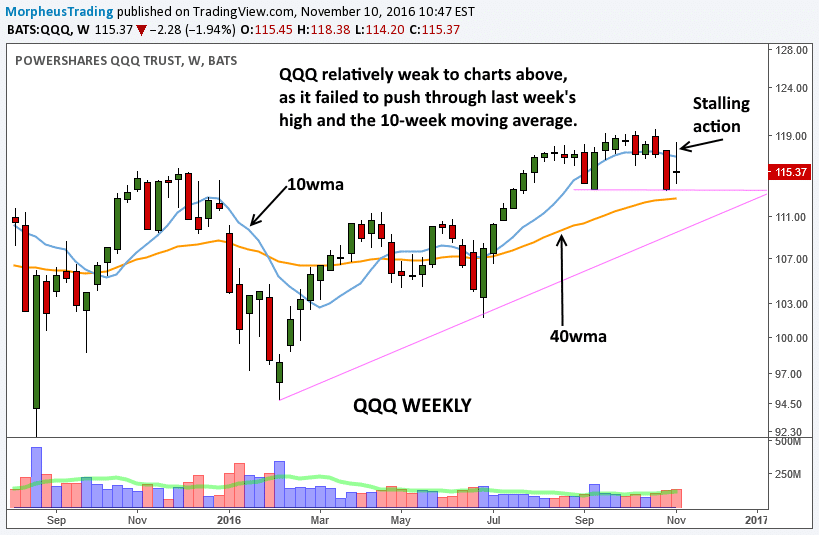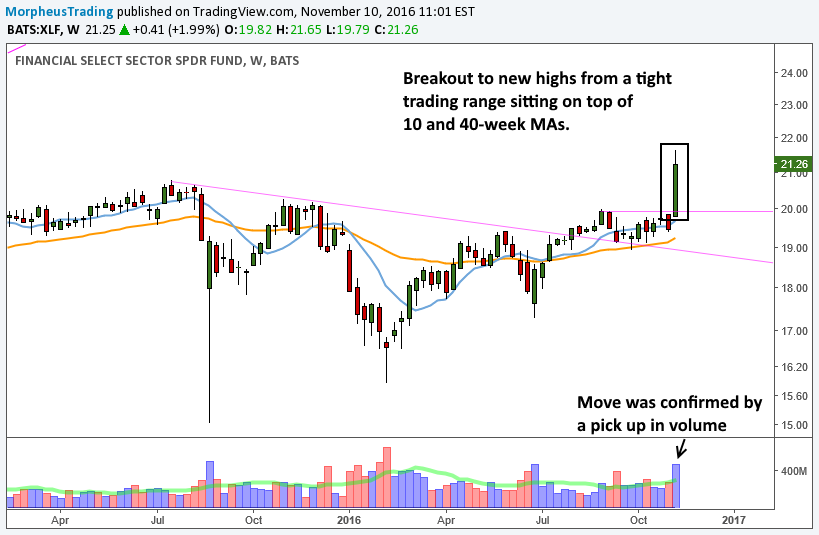
It’s been a roller coaster ride in the stock market in the two trading sessions since Donald Trump became elected as our 45th president.
But all we’ve seen so far is a typical knee-jerk reaction (volatile, indecisive price action) to an unexpected news event.
The real direction of the market’s next move is more important.
By now, you probably have encountered a plethora of opinions on how The Donald will affect the future direction of the stock market.
Just browse the front page of any major financial news site and you’ll see what I mean.
However, as always, I prefer to throw all opinions in the recycling bin and rely on proven chart patterns and technical analysis instead.
Continue reading to see what the charts are telling us about how the stock market may finish up the year.
Drastic Divergence
This week, we have noticed institutional money flowing out of technology and into more “traditional” sectors such as Financials.
Small-cap stocks have also started seeing positive money flow.
Such sector rotation is causing the NASDAQ to exhibit relative weakness, but not for the S&P 500 or small-cap Russell 2000.
Let’s start with a weekly chart of the benchmark S&P 500 Index SPDR ($SPY):

Notice that S&P 500 SPDR ($SPY) is currently trading at a 3-week high.
$SPY has also pushed above resistance of both its 10-week moving average (teal line) and downtrend line from the summer high.
The iShares Russell 2000 Index ($IWM) is showing a similar pattern to $SPY, indicating money flowing into small-caps now:

This week’s strong surge (so far) suggest that last week’s lows may now act as key support levels in $SPY and $IWM.
With new “swing lows” possibly in place, both of these ETFs could build new bases of consolidation and trade sideways in the coming weeks.
However, I feel strongly that sudden relative weakness in NASDAQ 100 ETF ($QQQ) is a major concern.
Unlike $SPY and $IWM, notice that $QQQ failed to move above resistance of last week’s high and 10-week moving average:

While $SPY and $IWM are rallying above significant, short-term resistance levels, $QQQ is stuck in the mud and spinning its tires.
Just a bit of selling pressure in the market could cause $QQQ to break down below key support of last week’s low.
As shown by the horizontal pink line, last week’s low also converges with the low of September, making that support level even more substantial.
Actually, horizontal convergence of that support level reminds me of the neckline of a bearish head and shoulders pattern (though it’s not a very textbook formation).
So, grab a sticky note and marker, then write in big letters: “QQQ – $113.45” because that is the magic price level to watch in the coming days.
If $QQQ breaks below $113.45, you should use extreme caution on all long positions because stocks drop faster than they rise, especially when key support levels are violated.
Nevertheless, it’s hard to be overly bearish on the market when we’re still seeing extremely bullish divergence and money flow into the Financial sector:

The Financial Sector SPDR ($XLF) had a monster breakout to a fresh 52-week high this week.
Higher volume confirmed the institutional sector rotation into financials.
Tug Of War
With Financials rocketing higher while Tech stocks are in danger of losing major support, swing trading may be challenging right now.
This is because divergent markets are typically marked by high indecision and volatility, both throughout the trading session and from day to day.
As such, I humbly suggest minimizing your capital risk by reducing your average share size for all new stock and ETF trade entries.
When the tug of war in the stock market eventually resolves itself, we can look forward to a new trend being established.
Regardless of which direction the trend eventually resolves itself, our plan is to consistently profit from swing trading stocks and ETFs (as we have been doing since 2002).
What do you think is the market’s next move from here? Share your comments below.

One comment on “Focus On The Stock Charts Now, Not The Donald”